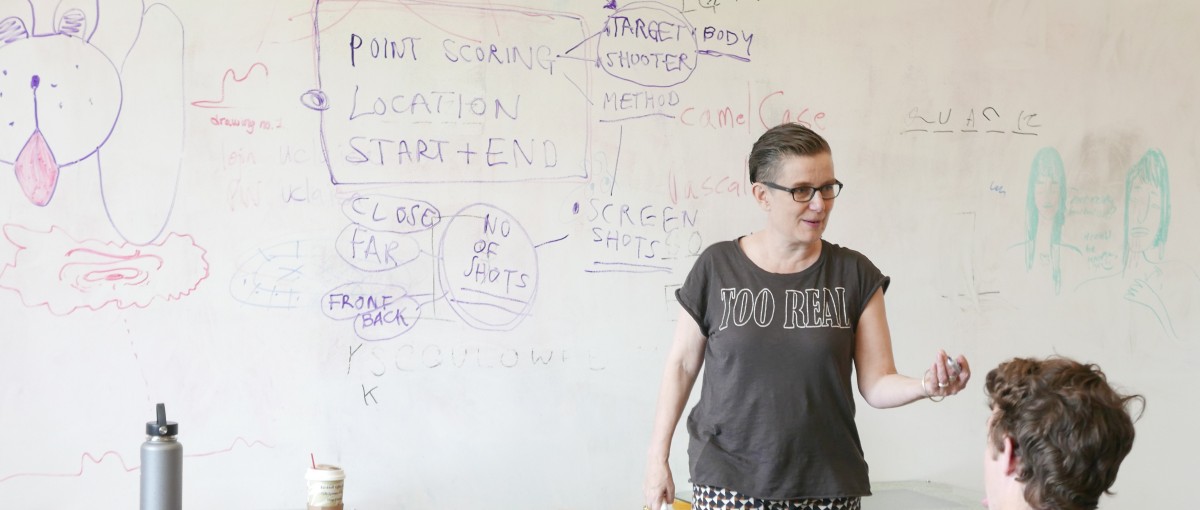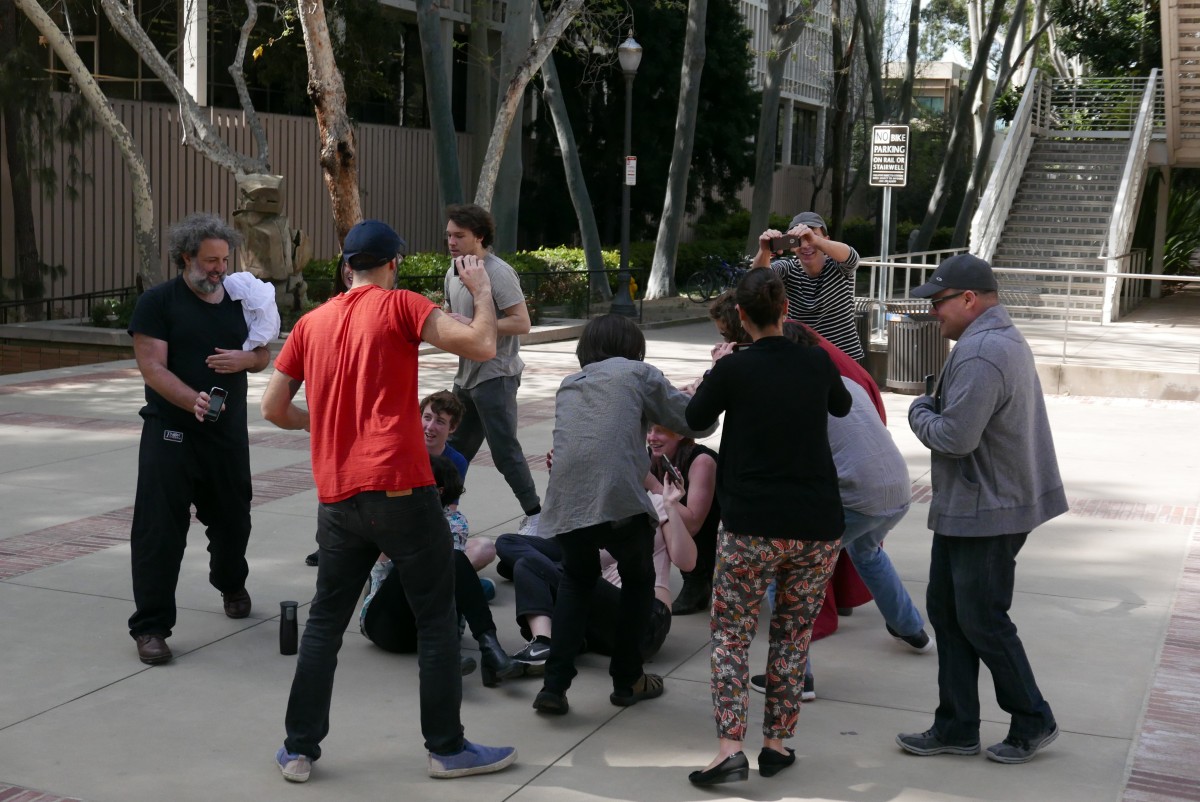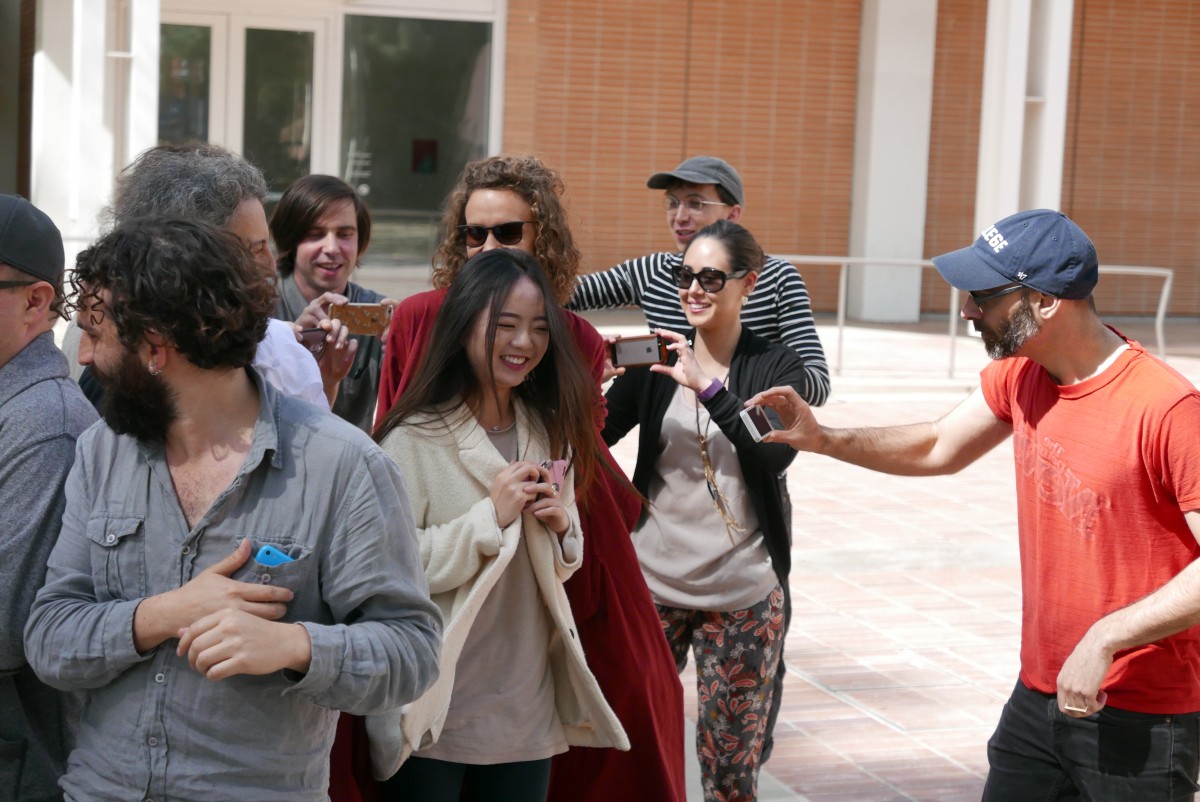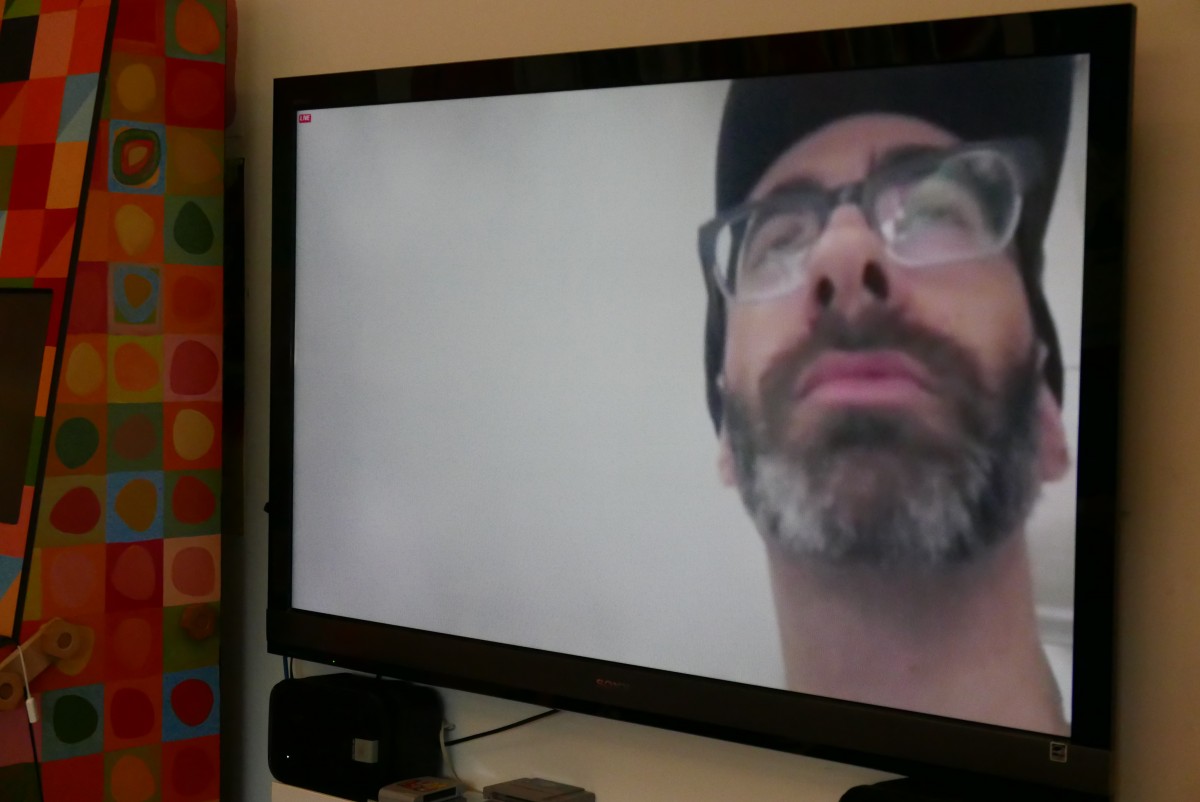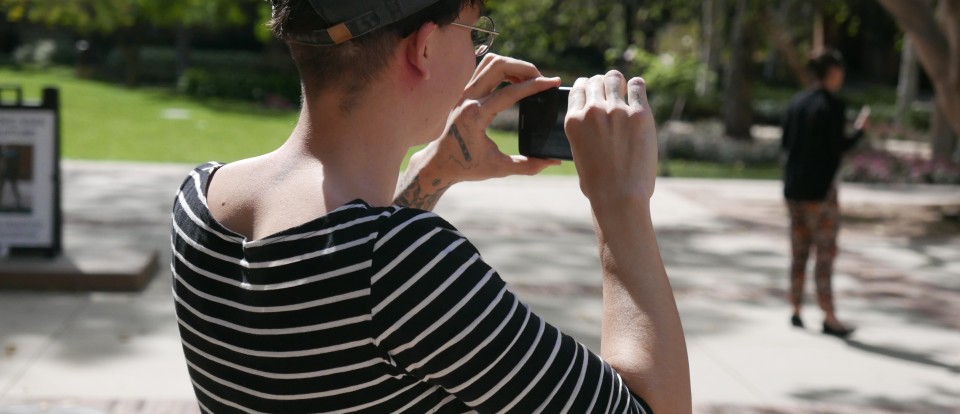
A workshop and talk with
Ju Row Farr of Blast Theory
Posted on March 6th, 2017
by
Lee Tusman
Last week the UCLA GameLab and UCLA Design | Media Arts was pleased to welcome Ju Row Farr from Blast Theory for 2 days of talks and workshop. Blast Theory is a UK-based art group that creates work combining interactive media, digital broadcast and live performance. Their singular works are based around audience participation and immersive experience. Many of their works combine live action with use of phones or other communication technology.
Blast Theory was formed by 3 artists in 1991. Their works can be considered a type of “pervasive game” in their meshing of in-game experiences with the physical world. For example in their work “A Machine To See With” the participant steps into a world preparing to commit a bank heist. Blast Theory describes this work as “a film where you play the lead.” It was commissioned from the Sundance Film Festival, 01 San Jose Biennial and the Banff New Media Institute. Participants were guided via a phone call made to their cell phone throughout the experience. After entering your cell phone number in a website, several days later one receives a phone call from an automated voice number telling you where to go in the city. Once at that location you receive additional calls guiding you through the city, connecting you with a partner in the planned heist, and mentally preparing you for the crime and aftermath.
Farr’s talk at UCLA described Blast Theory’s 26 year history of their work, from their early pieces to more recent work such as their 2016 immersive theater piece Operation Black Antler, which implicated players in a world of undercover surveillance and creating a false identity within a secretive protest group.
On Friday, Farr returned to the GameLab to lead a daylong workshop on live streaming games and audience interaction. Participants in the workshop, made up of UCLA graduate and undergraduate students and several visitors from CalTech studied game mechanics for a game based on the folk games Tag/Capture The Flag. Using a streaming phone app, Bambuser, we formed teams and selected a secret “shooter” for each team. The shooter used their phones and attempted to discover the covert shooter from other teams and to “capture” them with their camera. From this entry point a series of iterations were developed.
In the afternoon, we discussed the mechanics of the game, interaction between live and online players, and asymmetrical rules and modes of interaction. This discussion led to the prototyping of two further games. In the first, students created an interactive asymmetrical hide-and-seek team game to be held (quietly!) in a university library. Each team had a single operator hidden covertly somewhere in the research library with a laptop. This laptop received a live stream of all of the players on that team scattered throughout the floor of the library. The operator was the “flag” or goal. If a team captured the operator/flag, they won the game. If someone was tagged by an enemy they became frozen in the spot and could only be unfrozen by someone on their own team physically untagging them. The operator used their streams as a central command, communicating to their team the likely location of rival teammates, where frozen teammates were, and where they believed the enemy operator was located.
The second prototyped game was an interactive story, combining mechanics of pictionary with the use of a streaming camera. In this game each round one person would select a sentence and then use the streaming camera to remotely capture footage to communicate that sentence and idea. This was livestreamed back to the GameLab room so that players there attempted to figure out the sentence being communicated. The results were poetic, beautiful little works – combining the feel of an experimental art film with a poetry reading and live action videogame!

